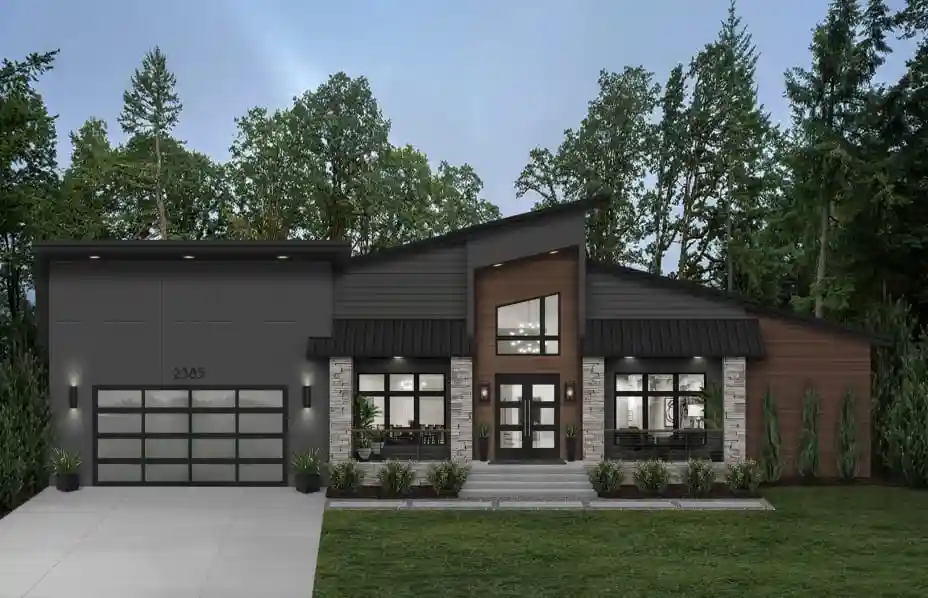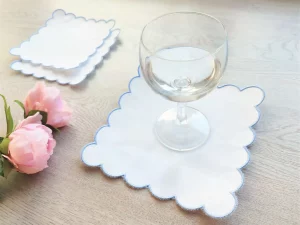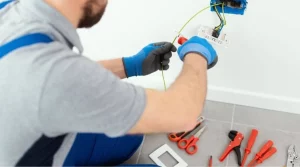In the world of modern home design, sustainable practices and eco-friendly solutions are becoming increasingly important. This holds true for modern home exterior design as well, where homeowners and designers are exploring new ways to create visually appealing exteriors that have a minimal impact on the environment.
This article dives into the concept of sustainable modern home exterior design, focusing on the various green solutions available to homeowners who want to enhance the exteriors of their homes. By incorporating these solutions, homeowners can achieve stunning exteriors while making a positive contribution to a more sustainable future.
Key Takeaways
- Promotes environmentally friendly practices
- Enhances energy efficiency of a home
- Reduces carbon footprint
- Maximizes natural resources
The Importance of Sustainable Modern Home Exterior Design
The significance of sustainable modern home exterior design lies in its ability to promote environmentally friendly practices and enhance the energy efficiency of a home.
By incorporating green solutions into the design and construction of a home’s exterior, homeowners can reduce their carbon footprint and contribute to a healthier planet. Sustainable design principles focus on using renewable materials, implementing energy-efficient technologies, and maximizing natural resources, such as sunlight and rainwater.
These practices not only benefit the environment but also result in long-term cost savings for homeowners through reduced energy consumption and lower utility bills.
Additionally, sustainable modern home exterior design can enhance the aesthetic appeal of a home, creating a harmonious blend of functionality and beauty. It allows homeowners to enjoy the freedom of living in a space that is both environmentally conscious and visually pleasing.

Key Elements of Modern Home Exterior Design
To further explore the concept of sustainable modern home exterior design, it is important to delve into the key elements that contribute to its overall aesthetic and functionality. These elements are essential in creating a harmonious and eco-friendly living space:
- Sustainable Materials: Using materials that are environmentally friendly, such as recycled or renewable resources, can significantly reduce the carbon footprint of a home. Incorporating materials like bamboo, reclaimed wood, or recycled metal can add a unique touch to the exterior while promoting sustainability.
- Energy Efficiency: Implementing energy-efficient features like solar panels, LED lighting, and properly insulated walls can help reduce energy consumption and lower utility bills. These elements not only benefit the environment but also create a comfortable and cost-effective living environment.
- Natural Landscaping: Integrating native plants and landscaping techniques that require minimal water usage can enhance the beauty of the home’s exterior while conserving water resources. Additionally, incorporating rainwater harvesting systems can further contribute to sustainability.
- Smart Home Technology: Utilizing smart home technology allows homeowners to control and monitor energy usage, security systems, and irrigation remotely. This technology promotes convenience, efficiency, and sustainability.
Incorporating Green Solutions Into Your Home’s Exterior Design
Incorporating green solutions into your home’s exterior design is essential for creating a sustainable and eco-friendly living space. Not only does it help reduce your carbon footprint, but it also promotes a healthier environment for you and your family.
There are several ways to incorporate green solutions into your home’s exterior design. One option is to use sustainable materials, such as recycled wood or eco-friendly siding, for your home’s exterior walls.
Another option is to incorporate energy-efficient features, such as solar panels or rainwater harvesting systems, into your home’s design. These features can help reduce your reliance on non-renewable energy sources and conserve water.
Additionally, you can create a green space by planting native plants and implementing a water-efficient irrigation system. Native plants are well-adapted to the local climate and require less water and maintenance compared to non-native plants. A water-efficient irrigation system can further reduce water waste and promote efficient water usage.
Sustainable Materials and Technologies for Modern Home Exteriors
When considering sustainable materials and technologies for modern home exteriors, it is important to explore options that align with your eco-friendly goals and design aesthetic. Here are four sustainable materials and technologies that can enhance the sustainability and visual appeal of your home:
- Recycled materials: Using recycled materials, such as reclaimed wood or recycled plastic, can reduce the demand for new resources and minimize waste. These materials can be used for siding, decking, and other exterior applications.
- Solar panels: Installing solar panels on your home’s exterior can harness the power of the sun to generate electricity. This renewable energy source can reduce your reliance on fossil fuels and lower your carbon footprint.
- Green roofs: Green roofs are covered with vegetation, providing insulation and reducing stormwater runoff. They can also create a natural habitat for birds and insects, contributing to biodiversity.
- Rainwater harvesting: Collecting rainwater can be an effective way to conserve water and reduce your water bill. Rain barrels or underground storage tanks can capture and store rainwater for use in irrigation or other outdoor purposes.
Tips for Achieving a Stylish and Eco-Friendly Modern Home Exterior
When aiming to achieve a stylish and eco-friendly modern home exterior, it is important to consider these helpful tips.
First, focus on using sustainable materials and technologies that have a minimal impact on the environment. Opt for materials such as reclaimed wood, recycled metal, and natural stone, which not only look stylish but also reduce the need for new resources.
Additionally, incorporate energy-efficient features into your home design, such as solar panels, energy-efficient windows, and insulation. These features not only reduce your carbon footprint but also save you money on energy bills in the long run.
Furthermore, consider using native plants in your landscaping, as they require less water and maintenance compared to exotic species.
Finally, embrace minimalism and declutter your exterior space, creating a clean and modern look.
Frequently Asked Questions
What Are Some Examples of Sustainable Materials That Can Be Used in Modern Home Exterior Design?
Some examples of sustainable materials that can be used in modern home exterior design include recycled wood, bamboo, reclaimed bricks, and fiber cement siding. These materials are eco-friendly and contribute to a greener and more sustainable home.
How Can I Incorporate Green Solutions Into My Home’s Exterior Design Without Compromising on Style?
Incorporating green solutions into your home’s exterior design without compromising on style can be achieved through careful selection of sustainable materials, such as recycled wood and eco-friendly paints, along with incorporating energy-efficient features like solar panels and rainwater harvesting systems.
What Are the Key Elements to Consider When Designing a Modern Home Exterior?
When designing a modern home exterior, key elements to consider include the overall aesthetic, functionality, and sustainability. Attention should be given to materials, layout, and landscaping choices to create a visually appealing and environmentally friendly design.
Are There Any New Technologies That Can Be Used to Make Modern Home Exteriors More Sustainable?
Yes, there are several new technologies that can be used to make modern home exteriors more sustainable. These include solar panels, green roofs, energy-efficient insulation, and smart home automation systems to optimize energy usage.
Can You Provide Tips on How to Achieve a Stylish and Eco-Friendly Modern Home Exterior on a Budget?
To achieve a stylish and eco-friendly modern home exterior on a budget, consider using sustainable materials such as recycled wood or metal. Incorporate energy-efficient features like solar panels and LED lighting. Opt for native plants in your landscaping for a low-maintenance and environmentally-friendly touch.
Conclusion
In conclusion, sustainable modern home exterior design offers homeowners a range of green solutions to enhance the visual appeal of their homes while minimizing their impact on the environment.
By incorporating eco-friendly materials, energy-efficient technologies, and biodiversity-promoting landscape designs, homeowners can create aesthetically pleasing exteriors that contribute to a more sustainable future.
With the growing emphasis on sustainability in home design, it is essential for homeowners and designers alike to explore these green solutions and make conscious choices that align with their environmental values.
You may also like to read:
5 BENEFITS OF A THOUGHTFULLY DESIGNED HOME






